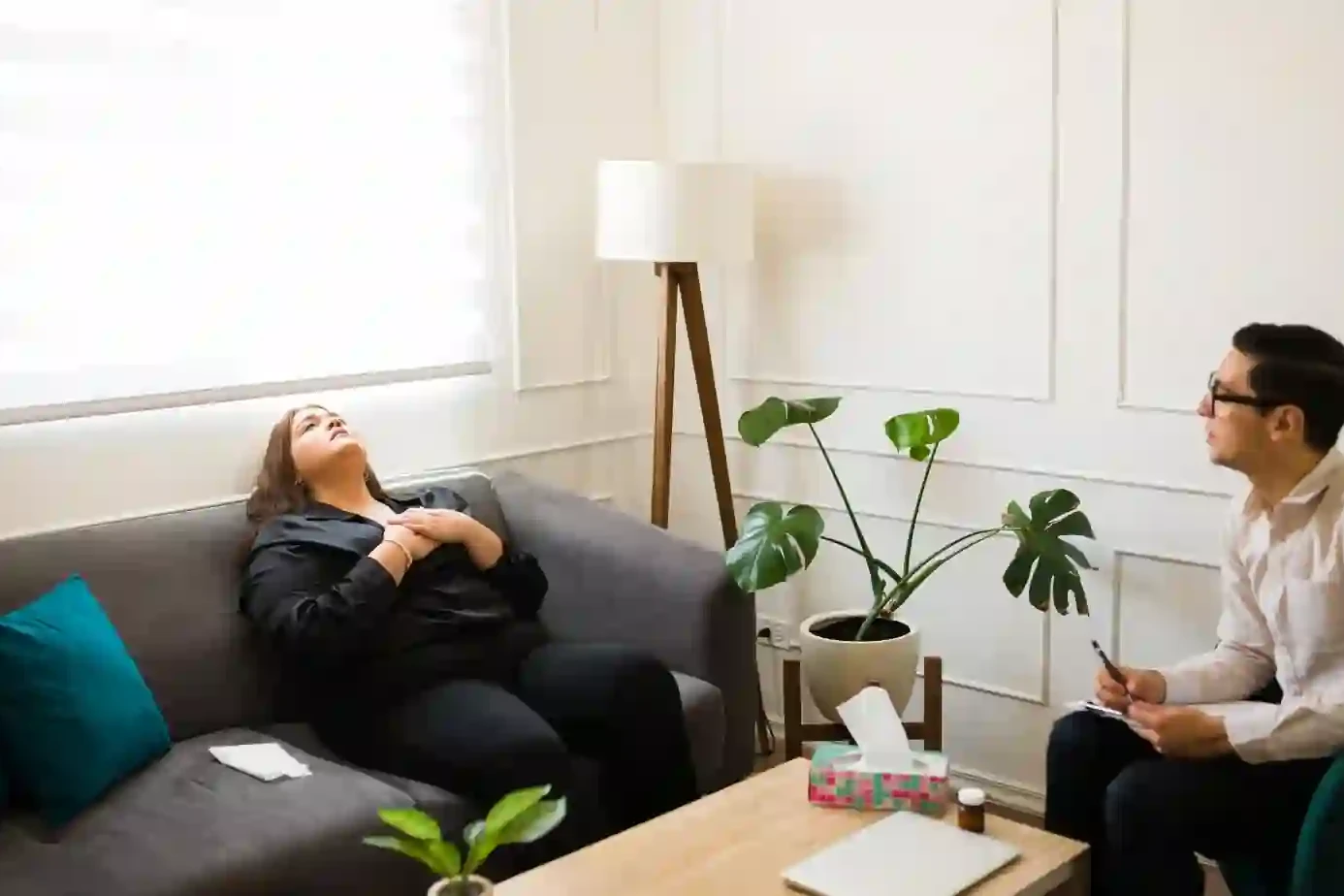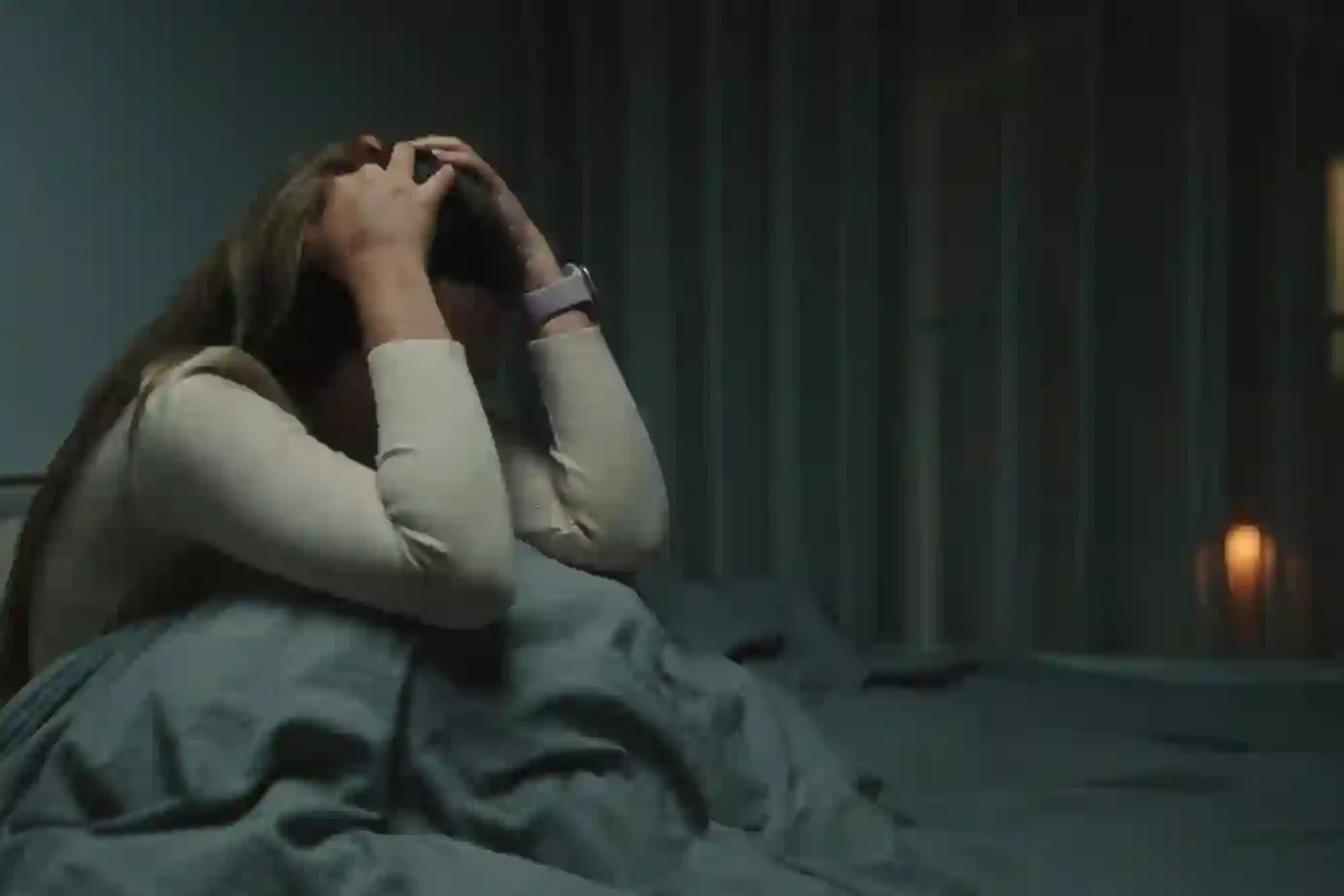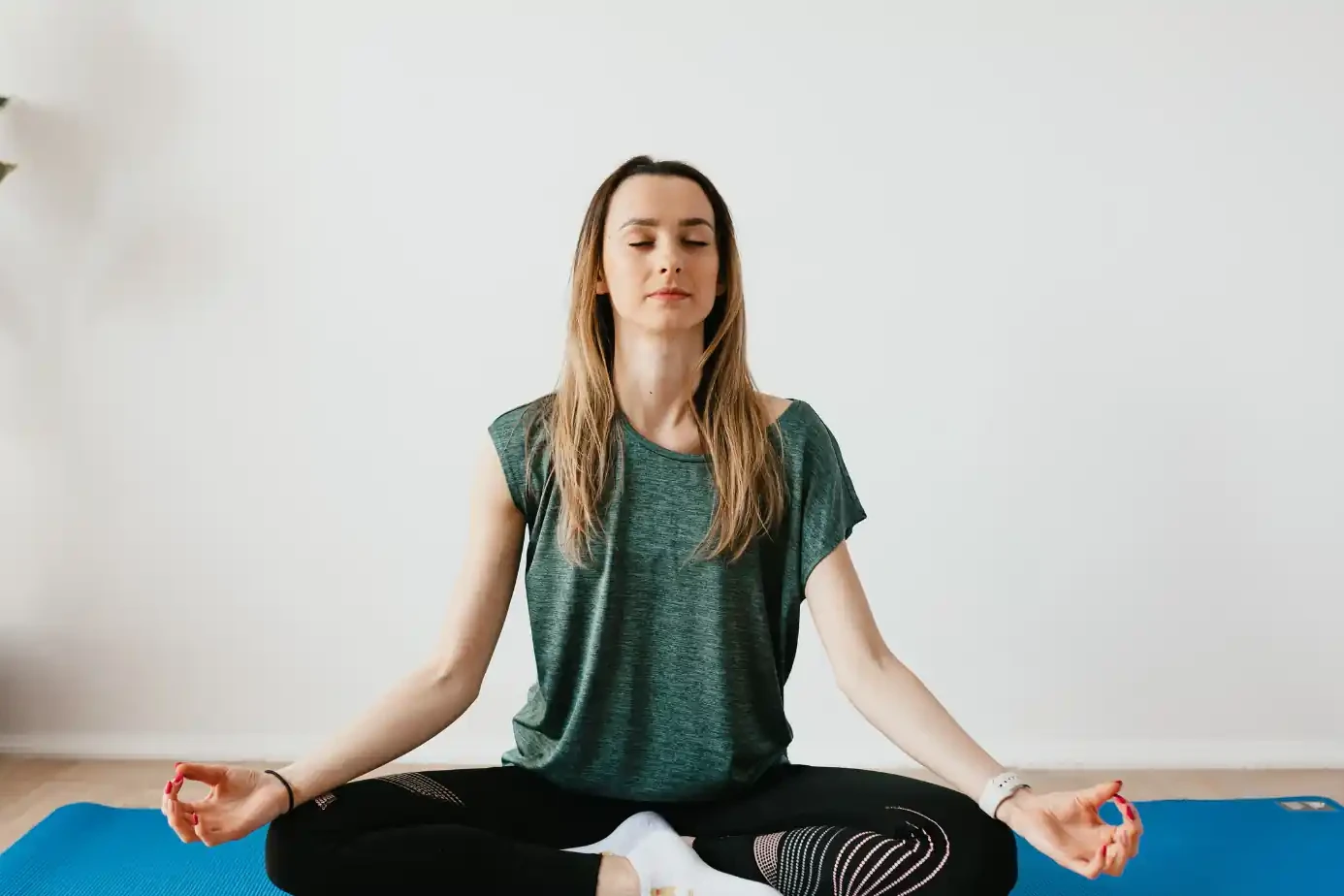Explore fun group activities for mental health that boost adult wellbeing. This article is for mental health experts and anyone wanting to improve their wellness. It offers creative ways to build connections, grow, and bounce back in a group. You’ll find everything from icebreakers to arts that help adults feel part of a community, manage their feelings, and reach their goals.
Group therapy has a long history, starting with Joseph Pratt in 1905. He noticed that patients who talked and interacted in groups got better faster than those who didn’t. Now, adult group therapy is still a key method. It offers emotional support, learning, and guidance that betters mental, emotional, and physical health.
Table of Contents
ToggleThe Importance of Group Therapy for Mental Health
Group therapy is a key tool for supporting adults’ mental health. It brings people together who face similar issues. This creates a space for connection, understanding, and growth.
The benefits of group therapy are many and deep. It helps people feel less alone and more supported.
Group Therapy: A Brief History and Overview
Group therapy started in the early 1900s with psychiatrist Joseph Pratt. He saw how sharing experiences in groups helped patients recover faster and stay healthier.
Now, group therapy is crucial for treating many mental health issues like depression, anxiety, trauma, and addiction. It helps people learn from each other and find new ways to cope.
- Group therapy creates a sense of community and belonging, reducing isolation.
- Participants gain from the different views and stories shared in the group.
- The group setting boosts accountability and motivation as members support each other’s progress.
- It’s often more affordable than one-on-one therapy, making it accessible to more people.
Group therapy uses the strength of shared experiences and support. It’s a valuable tool for those looking to improve their mental health and well-being.
Warm-Up Activities for Building Connections
Starting group therapy on the right foot is key to improving mental health. Group therapy warm-up activities help clients connect, feel less anxious, and focus on important topics. These exercises let everyone express themselves, bond as a group, and learn about each other.
Creative Ice-Breakers for Group Bonding
A fun ice-breaker is Two Truths and a Lie. Clients share two true and one false statement about themselves. It starts conversations and helps members get to know each other in a fun way. Another great icebreaker is Give Me a Minute, where everyone talks about a random topic for a minute. It boosts spontaneity, quick thinking, and public speaking, all while building group connections.
These activities are key for building connections in group therapy. Adding them to your sessions makes clients feel more at ease, engaged, and prepared for the therapy ahead.
Narrative Therapy Group Activities
Narrative therapy lets people own their life story and change it. It creates a space between the person and their experiences. This helps clients see problems without letting them define who they are. In group therapy, people can share and explore their stories together.
“My Life Story” is a fun group activity. Participants pick five to ten chapter titles that highlight key moments in their lives. It makes them think about their growth and strength.
Another great activity is the “Statement of Position Map.” Clients map how a problem affects different parts of their life. It shows the deep impact of challenges on their stories.
Expressive art storytelling is also powerful. Group members make art that tells their stories. It helps them share their feelings and experiences in a new way. This boosts self-expression and helps the group understand each other better.
These activities help clients shape their life stories and connect with others. They lead to personal growth and healing. Through these exercises, adults in therapy can find their strength and see their lives in a new light.
Group Activities for Anxiety and Depression
Group therapy is a strong way to handle anxiety and depression. It offers support, new views, and strategies for better mental health. Here are some group activities that help with these issues.
Affirmations
“Affirmations” is a key activity where members write positive statements about each other. It boosts self-esteem and builds community. Focusing on others’ strengths helps fight negative thoughts linked to anxiety and depression.
Healthy Brainstorming
“Healthy Brainstorming” is another great activity. The group works together to set goals for better mental health. They might come up with stress-reduction ideas, exercise plans, or mindfulness practices. This way, members support and motivate each other to improve.
Thought Replacement
“Thought Replacement” comes from cognitive-behavioral therapy (CBT), a proven method for anxiety and depression. Here, members swap out negative thoughts for positive, realistic ones. This helps change harmful thought patterns and brings a more balanced view.
Activities like affirmations, brainstorming, and thought replacement are great with therapy or medication for anxiety and depression. They create a supportive space and encourage teamwork. This leads to real mental health gains and better overall well-being.
Group ideas for mental health adults
There are many fun and helpful group ideas for adults dealing with mental health issues. These include creative activities like making vision boards, doing art, and enjoying music. Groups can also focus on self-care, managing stress, and building a supportive network.
For group therapy to work well, activities should match what the group needs and wants. Creating a safe space helps people grow, heal, and build strong support networks.
- Vision board creation: Participants create a collage of images, words, and symbols that represent their goals, aspirations, and desired future.
- Expressive art activities: Such as painting, drawing, or sculpting, allow individuals to explore and express their emotions in a non-verbal way.
- Music-related activities: Singing, instrument playing, or music-based discussions can help reduce stress, boost mood, and foster connections among group members.
- Self-care workshops: Focused on topics like meditation, mindfulness, or healthy coping strategies, these activities empower participants to prioritize their well-being.
Using a mix of fun and helpful group ideas, mental health experts can help adults connect, grow, and support each other on their mental health journey.
Group Activities for Grief and Loss
Dealing with grief and loss is tough, but group therapy for grief and loss offers great support. These activities make people feel less alone and help them connect with others. They create a community during hard times.
The “Person to Person” game is a great way to share stories and connect. It fights loneliness and shows how we’re all in this together. The “Interview Activity” also helps by letting people learn more about each other. This builds stronger support bonds.
Group therapy for adults with grief and loss offers a safe space. Here, people can share feelings, learn new ways to cope, and build a supportive network. These activities help people face grief with the help of friends.
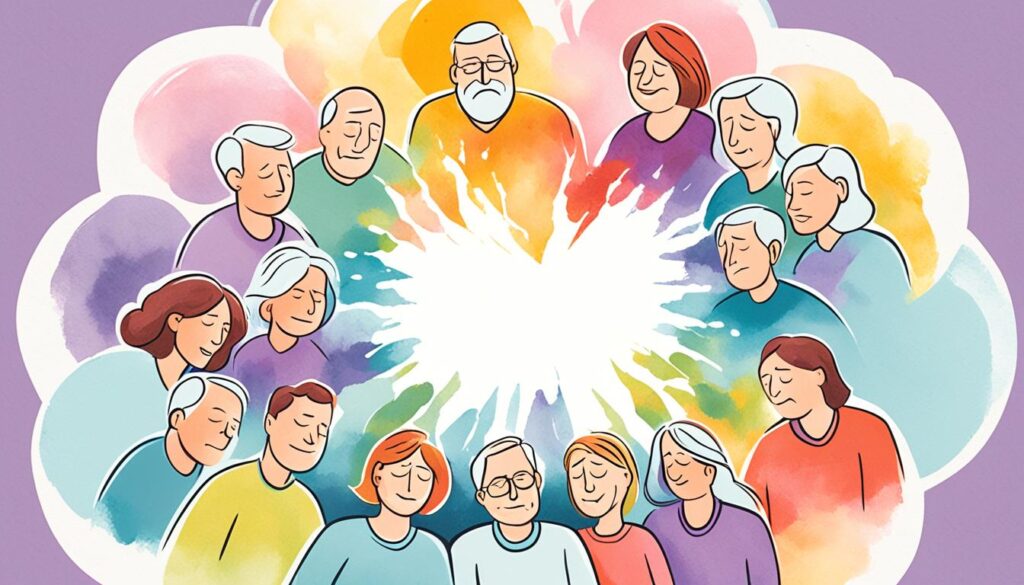
Bereavement groups can change lives, helping people heal and find new meaning. They offer a place for sharing, listening, and support. Group therapy is key for those facing loss’s complex emotions.
Creative Group Activities for Personal Growth
Group therapy is a great way to grow personally and find yourself. Creative activities like arts and self-reflection help people understand their thoughts and feelings better. These activities make you more aware of yourself, help you express emotions, and lead to positive changes in a supportive group.
Expressive Arts and Self-Reflection
Expressive arts therapy is a key way to grow in a group. People might make vision boards or share stories through art, music, or writing. These activities let you explore your inner self and find new ways to express and understand yourself.
Self-reflection is also important in group therapy. People think about their values, goals, or past experiences and share them with the group. This helps clear things up, spot patterns, and find new views that can lead to positive changes.
The group’s support is key in these activities. Sharing stories and insights helps everyone feel supported and inspired. It encourages exploring different parts of personal growth together.
Group therapy, with its focus on creativity and self-awareness, can really help with personal growth. It’s a powerful way to start a journey of self-discovery and positive change.
Mindfulness and Relaxation Group Activities
Adding mindfulness and relaxation to group therapy helps adults with mental health issues. These activities boost present-moment awareness, cut down stress and anxiety, and teach coping skills.
Guided meditation is a top choice for mindfulness groups. The leader takes the group through a calming meditation. This helps everyone focus on their breath, body feelings, and the now. It calms the mind and brings peace.
Deep breathing exercises are another great way to relax. Group members try out different breathing patterns, like the 4-7-8 method or belly breathing. This activates the parasympathetic nervous system and brings on relaxation. It’s great for handling anxiety and depression.
Using the senses, like with aromatherapy or touching different textures, adds to the mindfulness and relaxation. The smells of essential oils or the feel of various materials engages the senses. It helps people stay in the now.
By doing these mindfulness and relaxation activities together, group members learn to handle their feelings better. They improve emotional control and boost their wellbeing. They gain a set of strategies to help with their mental health and bounce back stronger.
Group Activities for Building Self-Esteem
Group therapy is a great way for adults to work on their self-esteem. By doing things together and supporting each other, group members can fight negative thoughts. They can also celebrate their strengths and see themselves in a better light. Two key activities for this are affirmations and self-reflection exercises.
Affirmations and Self-Reflection
In the “Affirmations” activity, each group member writes and shares kind words about others. This boosts the person’s confidence and helps the group see everyone’s strengths. Self-reflection exercises let people think about their values, goals, and what they want to improve on. This helps them feel more valuable to themselves.
Group therapy creates a safe place for adults with low self-esteem to change. Through activities that build confidence and self-esteem, people can fight negative thoughts. They learn how to support themselves and others in their group therapy sessions.
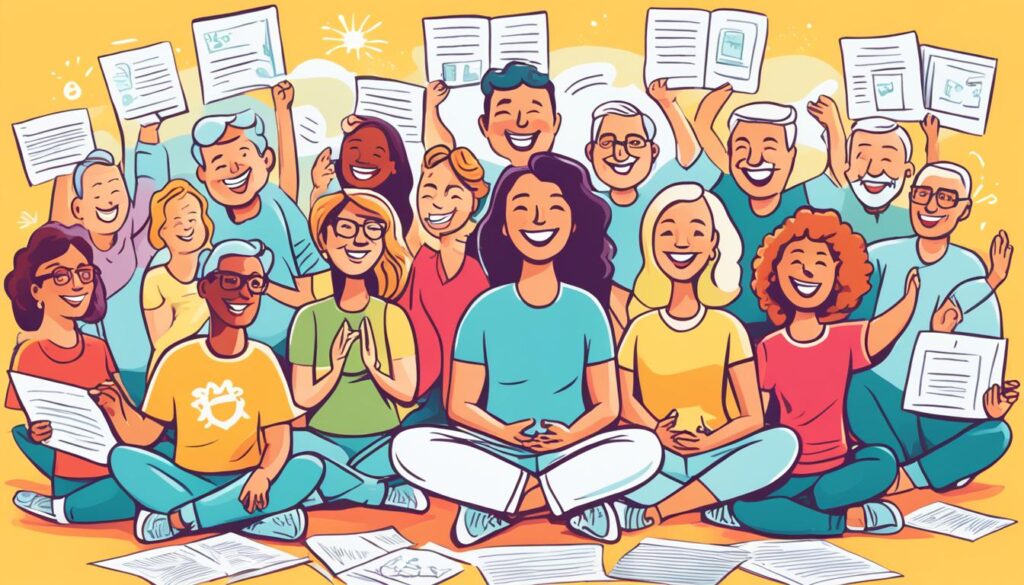
Closing Group Activities and Reflections
As your group therapy journey ends, the final stages are very important. [https://www.carepatron.com/guides/closing-activities-for-group-therapy]Closing activities and reflections let members share their experiences, say thanks, and strengthen their bonds.
A great way to close is with a group ritual, like a circle or a shared affirmation. These activities help members see their progress and get ready for what’s next in their mental health journey. Reflections also let people share what they learned and plan for their future.
By doing these closing activities, group therapy members can:
- Strengthen the connections and support networks they’ve built
- Think about their personal growth and changes
- Find steps to keep up their mental health and well-being
- Feel a sense of closure and thankfulness for the group experience
These closing moments are as crucial as the warm-up and main parts of the session. They make the group therapy sessions valuable and help prepare people for their next mental health steps.
Conclusion
Group therapy is a strong way to help adults with their mental health. It uses creative and interactive activities to build connections and help people grow. This approach also offers ways to deal with mental health issues.
Through activities like narrative therapy and mindfulness, group therapy helps adults take charge of their healing. Studies and clinical findings show its benefits. So, group therapy is becoming more common and easy to find for those who need it.
Using group therapy can change lives, leading to better mental health and more confidence. It’s a powerful way to support people on their journey to wellness.
FAQ
What are the benefits of group therapy for mental health?
Group therapy offers many benefits for adults facing mental health issues. It helps with emotional connection, learning, support, encouragement, and guidance. These can lead to better mental, emotional, and physical health.
What is the history of group therapy?
Joseph Pratt started group therapy in 1905. He noticed patients who joined groups did better than those who didn’t. Pratt thought the emotional support and connection helped with recovery.
What are some examples of warm-up activities for group therapy sessions?
Warm-up activities include “Two Truths and a Lie” and “Give Me a Minute.” In “Two Truths and a Lie,” clients share two true and one false fact about themselves. “Give Me a Minute” lets them talk about a random topic for a minute. These activities boost self-expression and group bonding.
How can narrative therapy be used in group therapy?
Narrative therapy uses activities like “My Life Story” and “Statement of Position Map.” In “My Life Story,” clients pick and share chapter titles of their life. “Statement of Position Map” maps out how a problem affects their life. Expressive art storytelling is also used, where members create art that tells their story.
What are some group activities for addressing anxiety and depression?
Activities for anxiety and depression include “Affirmations,” “Healthy Brainstorming,” and “Thought Replacement.” In “Affirmations,” members write positive statements about each other. “Healthy Brainstorming” helps them find ways to improve mental health together. “Thought Replacement” is a CBT technique where they change negative thoughts to positive ones.
What other types of group activities can benefit adults with mental health challenges?
There are many more group activities that help adults, like creative exercises and self-care activities. These can include making vision boards, doing expressive art, or music activities. They also help with stress management and building a supportive network.
How can group therapy help with grief and loss?
Bereavement groups help people dealing with grief and loss. They make it normal to feel grief, offer a safe space for emotions, and create a sense of connection. Activities like “Person to Person” and “Interview Activity” are effective.
What types of group activities promote personal growth and self-discovery?
Creative and self-reflection activities promote personal growth. Expressive arts and guided self-reflection help people understand their thoughts and feelings better. This leads to self-awareness, emotional expression, and positive change.
How can mindfulness and relaxation-based activities be incorporated into group therapy?
Mindfulness and relaxation activities include guided meditation and deep breathing. Sensory experiences like aromatherapy and touching different textures also help. These activities reduce stress, increase awareness, and teach coping skills.
What group activities can help build and maintain healthy self-esteem?
Activities like “Affirmations” and self-reflection exercises help build self-esteem. In “Affirmations,” members write and share positive statements. Self-reflection helps them understand their values and goals.
What are some important closing activities and reflections for group therapy sessions?
Closing activities like group rituals and individual reflection help members reflect on their experiences. They express gratitude and strengthen the connections made during the session.
Source Links
About The Author

This article is medically reviewed by Dr. Chandril Chugh, Board-Certified Neurologist, providing expert insights and reliable health information.
Dr. Chandril Chugh is a U.S.-trained neurologist with over a decade of experience. Known for his compassionate care, he specializes in treating neurological conditions such as migraines, epilepsy, and Parkinson’s disease. Dr. Chugh is highly regarded for his patient-centered approach and dedication to providing personalized care.
→ Book a consultation to discover which remedies suit your needs best.

